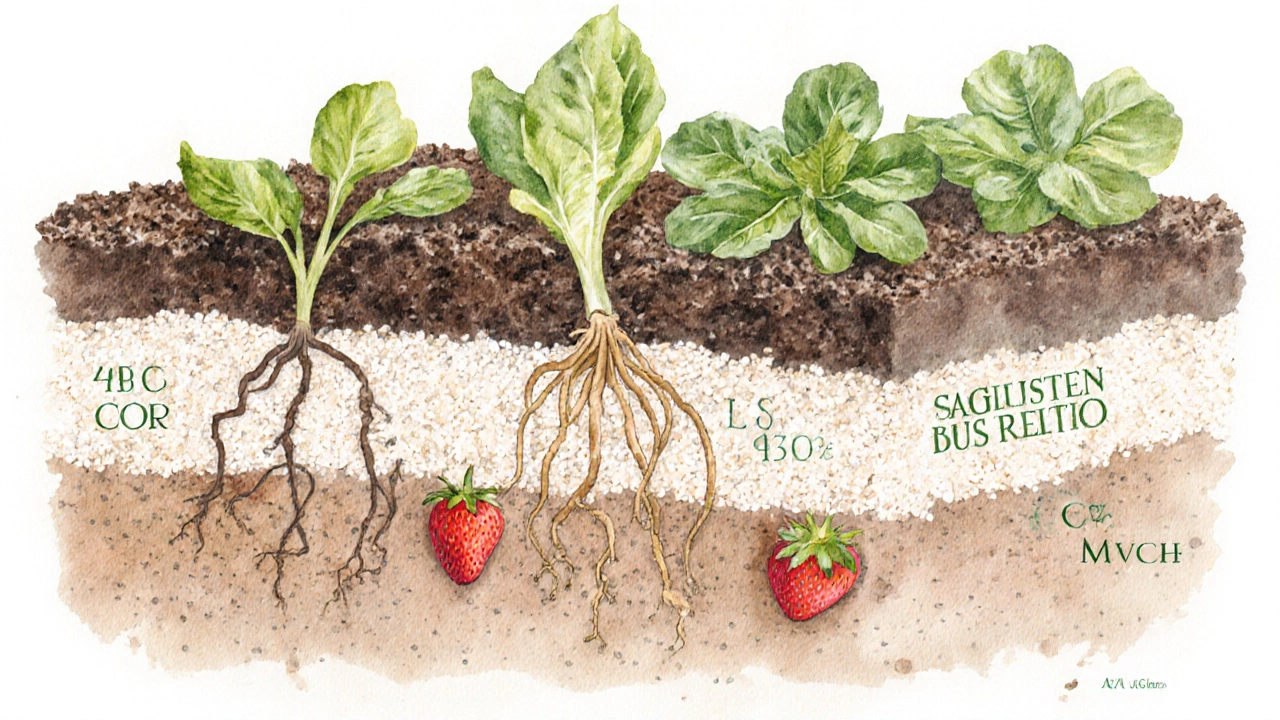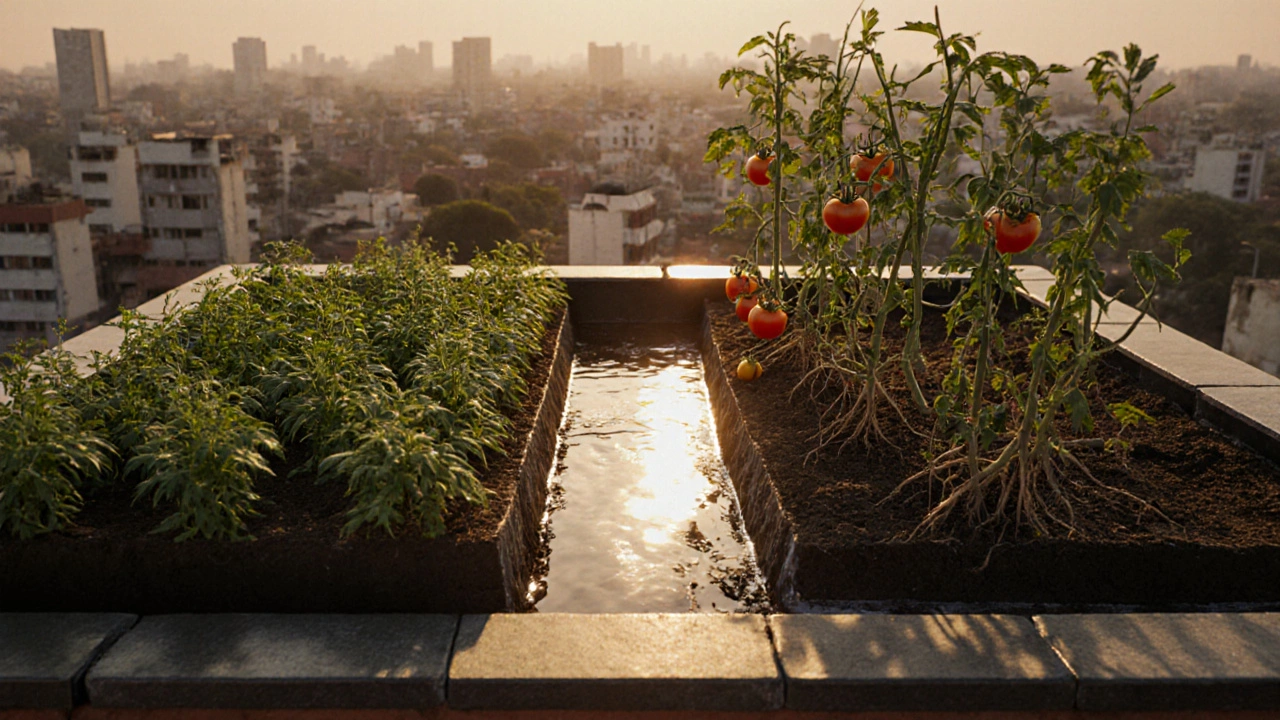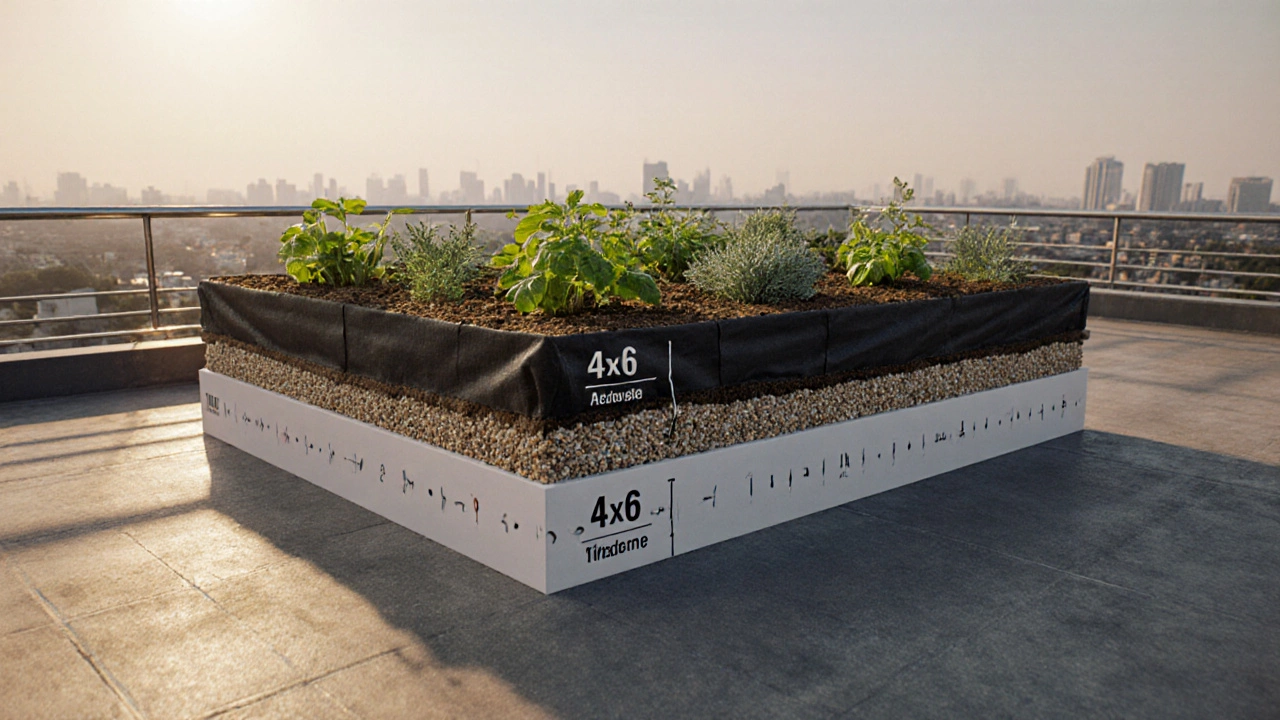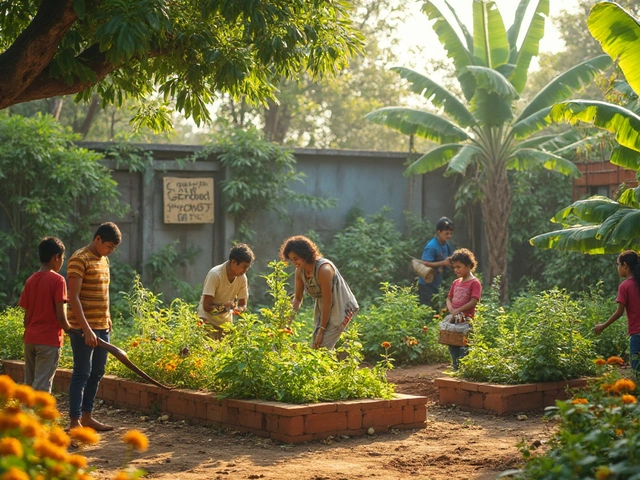Rooftop Garden Soil Depth Calculator
Calculate Your Safe Soil Depth
Calculating...
When you start planning a Rooftop garden is a garden built on a flat or sloped roof surface, often using lightweight containers or a continuous growing medium. Understanding the right soil depth is the first step toward a thriving, safe, and low‑maintenance garden aloft.
Quick Takeaways
- Most herbs and shallow‑rooted plants need 4-6 inches of growing medium.
- Leafy veggies (lettuce, spinach) thrive with 8-10 inches.
- Root vegetables and small fruiting plants generally require 12-18 inches.
- Always start with a drainage layer of 1-2 inches of gravel or lightweight paver stones.
- Calculate the total load (soil + water + plants) and keep it below the roof’s structural limit, typically 20-40 lb/ft² for residential decks.
Understanding Soil Depth in Rooftop Gardens
Soil depth isn’t just a number - it defines the space where roots can explore, where water can be stored, and where nutrients become available. On a roof, you also have to respect the structural load capacity of the building. Too shallow, and plants wilt or become unstable; too deep, and you might exceed weight limits or waste valuable space.
Why Soil Depth Matters
Three core reasons drive the need for a carefully chosen depth:
- Root development: Most plants need a minimum root zone to anchor themselves and to absorb water and nutrients efficiently.
- Water retention and drainage: A balanced depth allows water to be stored long enough for plant use while still draining excess to prevent roof leakage.
- Insulation and load distribution: The soil mass acts as a thermal buffer for the building and spreads the weight across the deck. Too much mass can overload the roof; too little can reduce insulation benefits.
Factors That Influence the Right Depth
Every rooftop garden is unique. Consider these variables before you pick a depth:
- Structural load capacity - ask your builder or check design documents for the safe weight per square foot.
- Plant selection - shallow‑rooted herbs vs deep‑rooted vegetables.
- Local climate - Windy, hot areas need deeper media to buffer temperature swings.
- Roof waterproofing and drainage layer design - a well‑engineered layer reduces risk of leaks.
- Availability of a lightweight growing medium - mixes with perlite, vermiculite, or expanded clay can cut weight dramatically.

General Guidelines by Plant Category
Here’s a quick rule‑of‑thumb chart you can adjust based on your roof’s load limit:
- Herbs (basil, thyme, mint): 4-6 inches
- Leafy greens (lettuce, arugula, spinach): 8-10 inches
- Small fruiting plants (strawberries, cherry tomatoes): 10-12 inches
- Root vegetables (radish, carrot, beet): 12-18 inches
- Perennial shrubs or dwarf trees: 18-24 inches (only if roof can handle the extra load)
Designing Your Soil Profile
Follow these steps to build a safe, productive soil layer:
- Confirm load limits. Get the maximum allowable weight (lb/ft²) from a structural engineer.
- Lay a drainage layer. Use 1-2 inches of crushed terra‑cotta, lightweight gravel, or pre‑formed drainage boards.
- Install a filter fabric. A non‑woven geotextile prevents fine particles from clogging the drainage.
- Add a lightweight growing medium. Mix 40 % compost, 30 % coconut coir, 20 % perlite, and 10 % expanded clay pellets.
- Top‑dress with a cap layer. A 0.5‑inch blanket of fine mulch reduces water loss and keeps the surface tidy.
Measure the assembled depth and multiply by the area to estimate total weight. Remember that saturated soil can weigh roughly 100 lb per cubic foot, while a high‑perlite mix drops to about 50 lb per cubic foot.
Mixing a Lightweight Growing Medium
A good mix balances water retention, aeration, and nutrients while staying light. Here’s a proven recipe (by volume):
| Ingredient | Typical Weight (lb/ft³) | Purpose |
|---|---|---|
| Compost (well‑aged) | 45 | Nutrient source |
| Coconut coir | 30 | Water retention |
| Perlite | 7 | Aeration, weight reduction |
| Expanded clay pellets | 15 | Structure, drainage |
This blend averages about 45 lb/ft³ when dry - roughly half the weight of a traditional garden soil, giving you more depth for the same load.

Case Study: 4‑inch Herb Garden vs 12‑inch Vegetable Bed
Imagine a 10 ft × 10 ft rooftop plot (100 ft²). Your roof can support 30 lb/ft² total, or 3,000 lb.
Scenario A - Herbs (4 in depth)
- Volume = 100 ft² × 0.33 ft = 33 ft³
- Weight (dry) ≈ 45 lb/ft³ × 33 ft³ = 1,485 lb
- Water‑saturated weight ≈ 1,485 lb + 0.33 × 100 ft² × 62 lb/ft³ (water) ≈ 1,485 lb + 2,046 lb = 3,531 lb → exceeds limit.
To stay within load, reduce the area, add a secondary support, or switch to an even lighter mix (e.g., 30 lb/ft³).
Scenario B - Tomatoes (12 in depth)
- Volume = 100 ft² × 1 ft = 100 ft³
- Dry weight ≈ 45 lb/ft³ × 100 ft³ = 4,500 lb (already over limit).
Solution: use modular containers (e.g., 5‑gal pots) that distribute load, or limit planting to a smaller footprint (e.g., 30 ft²).
These calculations show why depth alone isn’t enough - you must match depth, area, and mix density to the roof’s capacity.
Maintenance Tips to Extend Soil Life
- Refresh the top 1-2 inches of medium each spring with fresh compost to replenish nutrients.
- Inspect the drainage layer annually; clear debris that could block flow.
- Install a low‑flow irrigation system (drip emitters or capillary mats) to avoid over‑watering, which adds unnecessary weight.
- Rotate crops every 2-3 years to prevent soil‑borne diseases.
Comparison Table: Recommended Soil Depth by Plant Type
| Plant Category | Typical Root Depth (in) | Suggested Soil Depth (in) |
|---|---|---|
| Herbs (basil, thyme) | 4-6 | 4-6 |
| Leafy Greens (lettuce, spinach) | 6-8 | 8-10 |
| Small Fruiting (strawberries, cherry tomatoes) | 8-10 | 10-12 |
| Root Vegetables (carrots, beets) | 10-14 | 12-18 |
| Dwarf Perennials / Shrubs | 12-18 | 18-24 |
Adjust each recommendation up or down 1-2 inches if your roof can handle extra weight or if you use a super‑light medium.
Frequently Asked Questions
How much does one inch of rooftop soil weigh?
A dry, lightweight mix typically weighs 30-45 lb per cubic foot. One inch over a 1 ft² area equals about 0.083 ft³, so the weight is roughly 2.5-3.8 lb. When fully saturated, add about 62 lb per cubic foot of water, bringing the total to 6-8 lb per square foot.
Can I use regular garden soil on a roof?
Regular garden soil is too heavy (80-100 lb/ft³ dry) and retains too much water. It will quickly exceed most residential roof load limits and increase the risk of leaks. Always opt for a purpose‑made lightweight growing medium.
Do I need a waterproof membrane under the soil?
Yes. A high‑quality waterproof membrane protects the roof deck from moisture that can seep through the soil or drainage layer. Install it before laying the drainage board.
How often should I replace the rooftop soil?
If you use a balanced mix and add compost annually, the medium can stay productive for 3-5 years. After that, nutrient depletion and compaction may require a full refresh.
Is it safe to grow fruit trees on a rooftop?
Only if the roof is engineered for high loads (often >50 lb/ft²) and you provide deep, well‑drained soil. Dwarf varieties in large containers are a better choice for most homes.





